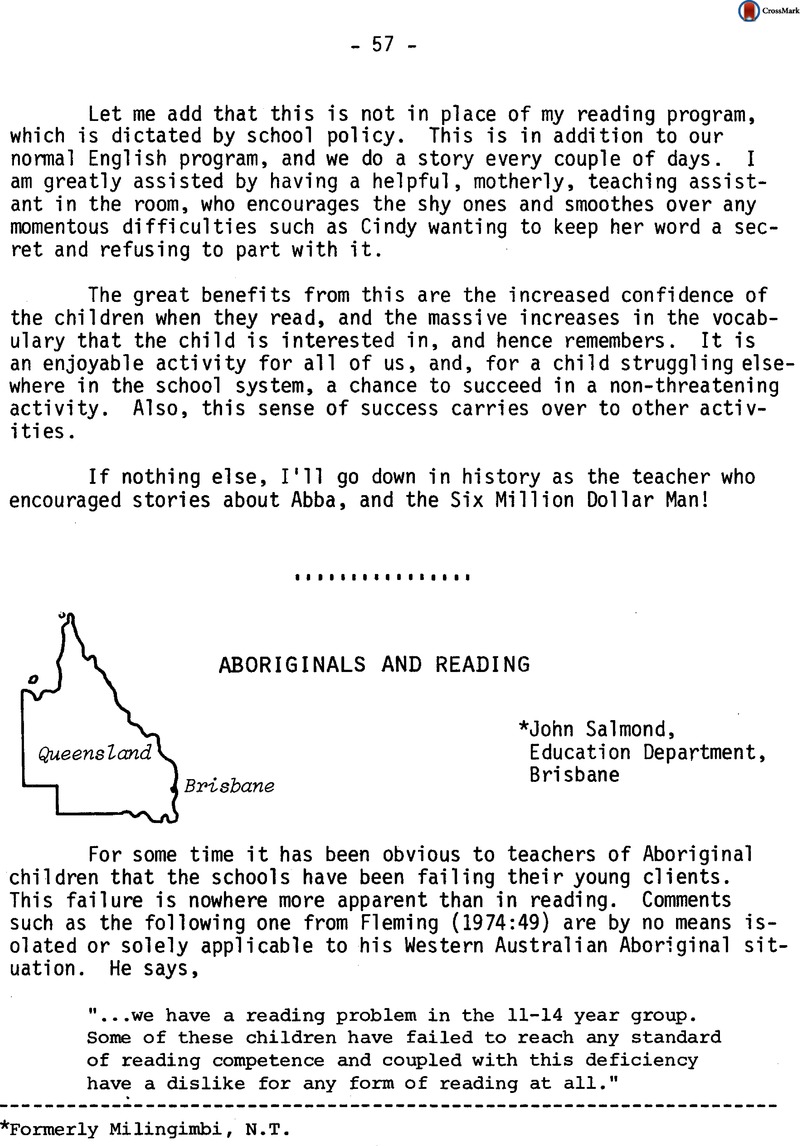Crossref Citations
This article has been cited by the following publications. This list is generated based on data provided by Crossref.
Boyd, R.M.
1978.
The Aboriginal Child and Literacy in English.
The Australian Journal of Indigenous Education,
Vol. 6,
Issue. 5,
p.
3.



